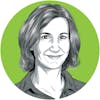 See
more of the story
See
more of the story
Maybe downtown Minneapolis will never get back to what it was before the pandemic.
Maybe that's a good thing.
Maybe we don't have to cram workers back into cubicles for a downtown to thrive. Maybe in a world of work-from-home, people are looking for more from downtown than office towers and parking ramps and a spiderweb of skyways engineered to whisk people in to work, then away to the suburbs.
The planners, creators and dreamers of Minneapolis gathered to talk about that last week, at the first of three community forums cosponsored by the Minneapolis Foundation and the Walker Art Center. People who like Minneapolis, talking about what they'd like for Minneapolis.
This isn't the first pandemic to shape and reshape downtown Minneapolis, said Thomas Fisher, director of the Minnesota Design Center at the University of Minnesota's College of Design.
Cholera epidemics in the 1860s prompted cities to build water and sewer systems. Indoor plumbing sparked the industrial and building boom that made Minneapolis a metropolis.
Social distancing during the influenza pandemic of 1918 set off a century-long push into the suburbs. Downtown Minneapolis started to function more as a workplace than a living space.
After each pandemic, cities changed and cities survived, said Fisher, whose most recent book is "Space, Structures and Design in a Post-Pandemic World."
"There's tremendous opportunities that emerge as a result of pandemics," he said. "We shouldn't get discouraged. … We should get ready for transformation."
Maybe some downtown commercial space will become housing instead. Maybe the workplaces that remain will become more flexible, comfortable, user-friendly spaces with child care.
Maybe Minneapolis will throw open the door to artists and creators and entrepreneurs. Maybe the downtown of the future will be a place families want to live — and can afford to live.
The pandemic changed the way Americans work, shop and live. The Abundant Cities narrative frames that as an opportunity. And as a chance to fix things in this city that were broken long before COVID.
Artist Gabrielle Grier wants to make sure there are more seats at the table for that conversation.
Grier, one of Wednesday's panelists at the Walker Art Center, wants to make sure conversations about the downtown workforce include everyone working downtown.
"I don't know that we're talking about the nurse that works 14 hours downtown," said Grier, who leads Juxtaposition Arts in north Minneapolis. A worker like that "has to think about the commute, where they're going to eat, the possibilities of having to bring family into those spaces."
It's time to bring those workers into the conversation, she said, "and not just the people who live in the suburbs."
If anyone was pining for the downtown of days gone by, former Minneapolis Mayor R.T. Rybak offered a reality check.
Years ago, back when Dayton's was Dayton's, Rybak stood at the top of the IDS tower to show his city off to a visitor.
"Here it is,'" Rybak said, waving to the view through the floor-to-ceiling windows.
The visitor took in the cityscape — the sterile stretches of asphalt around the Metrodome, the industrial ruins looming along the riverbank — and asked, "Where is it?"
In retrospect, Rybak said, the vibrant downtown he was trying to show off only covered about seven blocks. The same view today would show billions of dollars in residential and retail around the new stadium. The old warehouses by the river became the bustling shops and lofts of the North Loop.
Downtown is home and office and entertainment to tens of thousands of people a day. And it's home to shuttered storefronts, half-empty office towers and unhoused people suffering on half-empty sidewalks. Downtown is not what it was. Downtown is not what it could be.
Abundant Cities will host two more free public forums in April and May. Those who attend will have a chance to share their own ideas for a Minneapolis where everyone belongs, everyone is valued and everyone can afford to live. A place where people who don't need to go downtown still want to be downtown.
"Downtown is the center of a city," Rybak said. "How we fill in the rest of the story is up to us."




